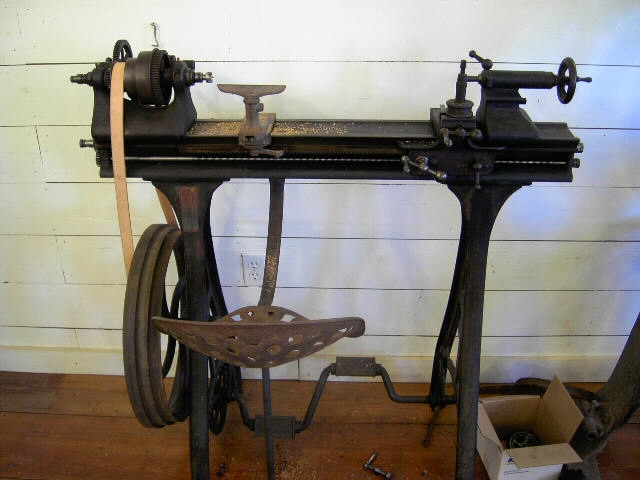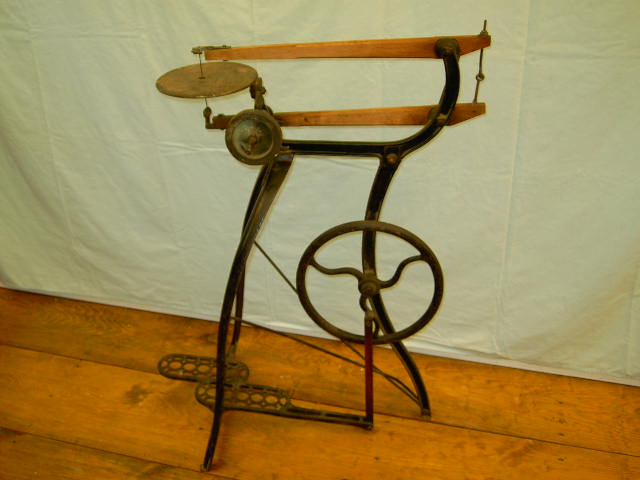These machines were offered in two different “grades” or “categories” with each one designed for a different level of use. Commercial grade or those that would be used by a builder or carpenter or in a small shop or factory and amateur or hobby grade that would have been used by children, women and men to do much lighter work.
Commercial Grade
Commercial grade machines were more robust and heavily constructed and designed to be operated for long periods of time. (I had an elderly gentleman call me a number of years ago that had a Barnes #2 scroll saw. He said it came from his grandfather’s shop and he remembered as a kid sitting and peddling it “all day long” making gingerbread for Victorian houses.) Commercial machines ranged in price from about $20 for scroll saws to well over $100 for metal lathe.
Barnes 4 1/2 Metal Lathe
Amateur Grade
The amateur or hobby grade scroll saws and lathes were smaller and much lighter in design and most all used the “sewing machine” type pedal. Some were offered with skirt guards and marketed to women “to keep the dress from the wheel.” These ranged in price from $1.50 for a basic, very light duty model up to $22 for one on a more ornate stand. Some amateur machines (primarily made by Barnes such as the scroll saw #1) were more robust and could be used by the more serious home shop person.
New Rogers by Miller Falls
So what was the Significance of Foot Powered Machinery?


